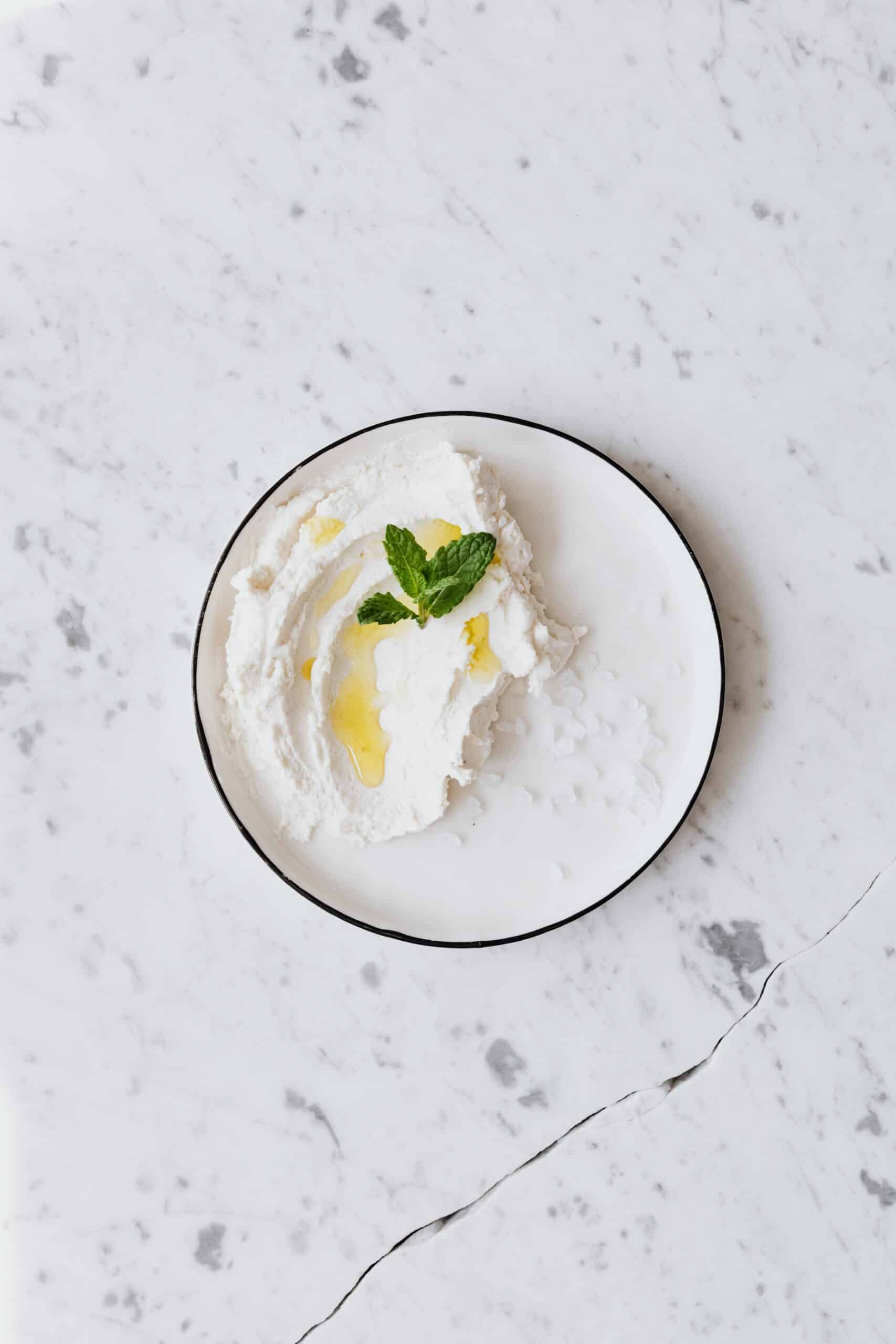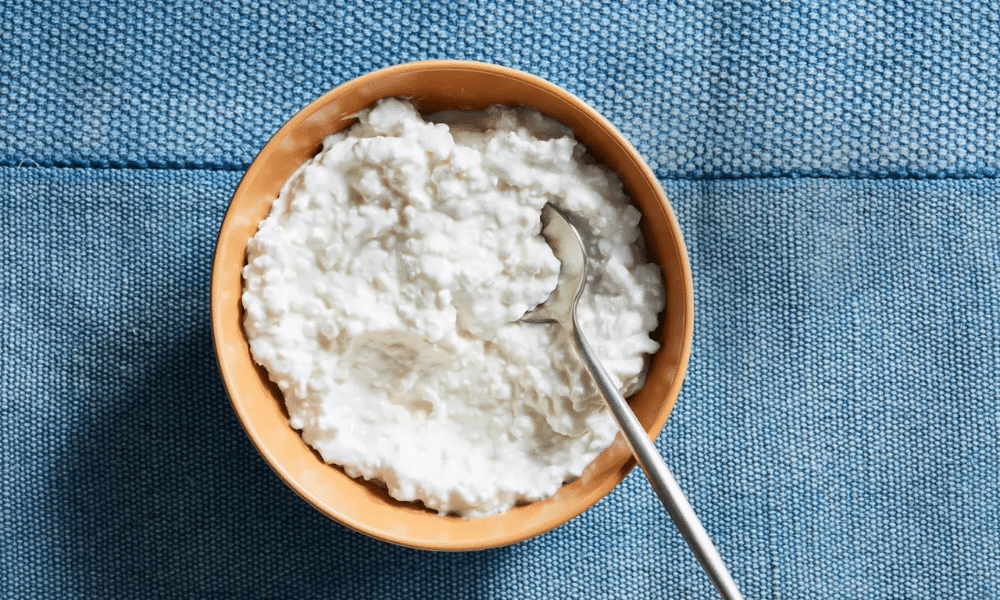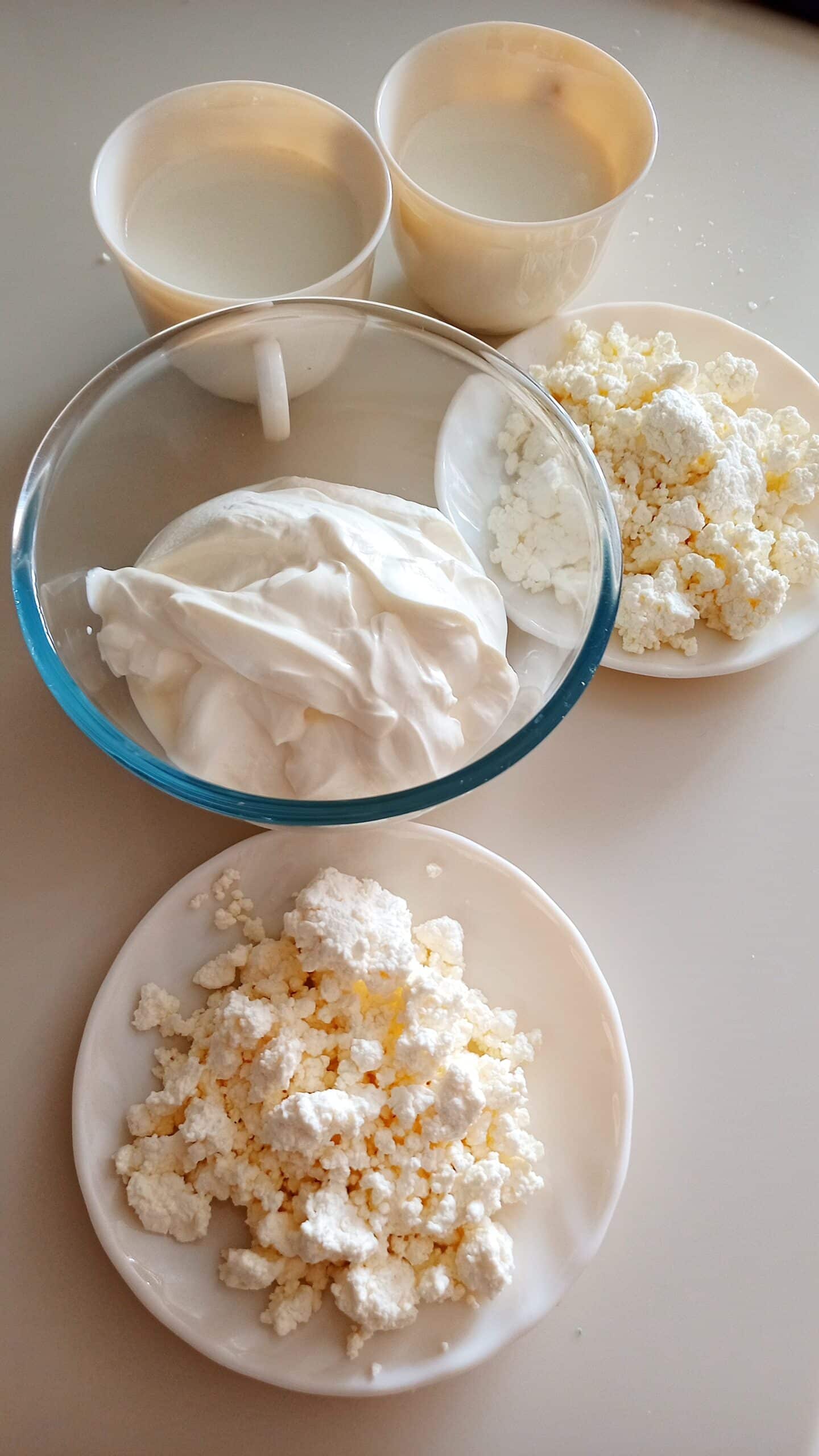Updated on November 11th, 2022
How can you improve the flavor of cottage cheese? Cottage cheese has the poorest reputation for the flavor of all the common dairy products. While many individuals seem to enjoy it, there appear to be just as many who despise it or are uninterested. Compared to the huge terrain of meals, cottage cheese’s lumpy and slightly liquidy texture is unusual. Furthermore, many individuals dislike the acidic, salty, yet creamy flavor it has at times.

Cottage cheese can be bland at first, but the flavor will improve as you eat more of it. Until you try cottage cheese, you won’t know how to make it taste excellent. It has a low-calorie count and is high in nutrients. There is no single “correct” method to eat it, and the texture varies by brand. The size of the curds in the cheese plays a role as well. To make cottage cheese taste excellent, follow a few simple steps.
What is Cottage Cheese?
Cottage cheese is a white, soft cheese with a creamy, soupy texture and a milky, salty flavor. It’s a simple, fresh cheese curd product notable for its long shelf life due to the lack of an aging procedure.
Cottage cheese is disliked by many individuals due to its smell and texture. Also, because people normally don’t enjoy the salty taste, which is both slightly sweet and salty at the same time, it’s termed an “acquired taste.” However, because they are accustomed to it, some people get increasingly fond of it. It melts on your tongue as you consume more of it. It’s also high in nutrients that are beneficial to your health. It also has a low-calorie count, making it ideal for your diet.
Cottage cheese texture and flavor vary depending on the producer and product. Depending on the size of the cheese curds inside, they may have a variety of flavors and varieties.
What does Cottage Cheese Taste Like?
Cottage cheese has a mild flavor and a faint saltiness to it. Cottage cheese has a similar flavor to ricotta, but it has more curds. Cottage cheese has a milkier flavor and a higher fat level, and Low-fat cottage cheese has a sourer flavor than ordinary cottage cheese.
Cottage cheese may taste strange at first, but it will blow your mind after you get used to it or understand how to eat it properly! Use this cheese to make your tart, for example, and have a lovely British dessert for breakfast. It’s possible that the uncooked cottage cheese won’t appeal to everyone at first bite. Some people fell in love with it right away, while others disliked it.
How to Make Cottage Cheese Taste Good?
Here are a few ways to improve the flavor of cottage cheese:
1. Sweeten it up
This is probably the most well-known — albeit rather outdated — method of consuming cottage cheeses. It does, however, have that pungent sweet thing going on that we can’t help but like.
Here are some sweet garnishes to brighten up a velvety bowl of cottage cheeses—mix and match your heart’s content. Furthermore, remember that you can go old school and stuff a split peach or melon with cottage cheese for a true “weight watcher’s delight.” It’s excellent on purpose, after all.
- Pineapple slices, peaches, plums—basically any ready-to-eat, exquisite organic product
- a new crop of berries
- Maple syrup/nectar
- Toasted nuts and jam
- Apple slices and a cinnamon scramble
2. Take the Delicious Route
After all, it’s cheese. The texture of the cheese lends itself to basic toppings like a drizzle of olive oil, but tactile pops like crispy chips and juicy tomatoes are a nice variety if you’re tired of CC.
- S&P, plus a spray of olive oil, chopped roasted peppers
- a sprinkling of za’atar, and a generous helping of grated cucumber
- scallions, salt and pepper, and a dash of spicy sauce
- Of course, S&P, chopped tomatoes and cucumber, and a drizzle of olive oil.
- Tortilla chips or crushed potato chips
3. Make a Nice Supper out of it
Cottage cheese can easily be added to your supper menu in addition to being a protein-rich snack. Cottage cheese can be used in place of ricotta in various recipes, including salads like this grilled kale and plum salad, filled with fried squash blossoms, and even lasagna to add additional protein (plus, cottage cheese is often cheaper than ricotta!). These savory cottage cheese pancakes and this herbaceous dip are favorites—pass the toast, pronto.
4. Toss with Some Hot Sauce
Mix in a few sprinkles of spicy sauce, such as Tabasco or Frank’s Red Hot, with cottage cheeses. Taste it and adjust the amount depending on the situation. This will offer a little kick to your cottage cheese without adding any extra calories.
5. Mix with Vegetables
Cottage cheese is a versatile ingredient that goes well with almost any vegetable. Tomatoes, cucumbers, red peppers, and chives are among the most popular choices.
6. Make a Smoothie out of it
Cottage cheddar can be blended into a smoothie to reduce its heft. Furthermore, if you don’t like the taste of cottage cheese, you can mask it by adding juice or other organic food. Try making a smoothie with 1/2 cup house, 1/2 cup squeezed orange, and 1.5 cups frozen natural product.
7. Salsa as a Complement
Salsa is a pretty common addition to cottage cheeses, even though it may seem strange to some. Individuals guarantee that salsa dominates the flavor of cottage cheese. Place 1/2 to 3/4 cup cottage cheese and 1/4 cup salsa in a mixing bowl. Cottage cheese and salsa can be eaten on their own or used as a dip for tortilla chips.
8. Use in an Omelet
You also can make an omelet and stuff it with cottage cheese instead. This can be a fulfilling way to start the day.
9. Take a Chance on Horseradish
Horseradish will, in general, win the flavor battle when combined with cottage cheeses because it is so delicious. For a cup of cottage cheese, you’ll only need approximately a tablespoon. To use as a plunge, this is fantastic.
10. Crackers that Crumble
In a cottage cheese dish, crumble a few wafers. The saltines’ crunchiness and pungency contrast beautifully with the smoothness of the cottage cheeses. You don’t have to go all out with your saltine selection. It’s fine to consume Ritz or Wheat Thins.
11. Add Herbs and Spices
Herbs, spices, and tastes can help improve the taste of cottage cheese while keeping it simple. Pepper, cinnamon, raisins, sesame seeds, dried onion, and whatever other tastes you enjoy are sprinkled on top.
Cottage Cheese’s Health Benefits
Cottage cheese is a nutritious food high in nutrients but low in fat and calories, especially if you choose low-fat or nonfat cottage cheese.
A Powerful Protein Pack
Protein accounts for up to 70% of the calories in cottage cheese, which is surprising. As I mentioned in the last section, although having a high protein level, it has a very low-fat content.
Low Calorie-Containing
Only about 183 calories and 5 grams of fat are present in a cup serving of reduced-fat cottage cheese, and every serving offers 30% of the daily sodium and phosphorus requirements. As a result, this cheese is quite beneficial for your weight-loss program meals.
An Excellent Vitamin and Mineral Source
Cottage cheese contains many vitamins, including vitamins A, B1, B3, B6, and especially vitamin B12. Calcium, selenium, potassium, and magnesium are all abundant minerals in this type of cheese.

What is a Good Cottage Cheese Seasoning?
Seasonings, herbs, and spices Herbs, spices, and seasonings may do an outstanding job of improving the flavor of cottage cheese while also being quite easy to use. Pepper, cinnamon, raisins, sesame seeds, dried onion, and any other flavors that appeal to your taste can be sprinkled in at this point.
Is Cottage Cheese Helpful in the Fight Against Abdominal Fat?
Cottage cheese is one example of a food that can help you lose visceral fat if you eat more of it. Eating more other meals may also help you lose visceral fat. Because it is such an excellent source of protein, cottage cheese may be useful in the fight against visceral fat. Eating extra protein is recommended as an excellent long-term technique for reducing fat in the abdominal region by specialists.
Is Cottage Cheese a Better Option than Yoghurt?
Greek yogurt has 120 calories per cup, compared to 160 calories in cottage cheese. Probiotics are also more likely to be present (live active cultures of gut-friendly bacteria). However, one significant distinction influences the decision: cottage cheese can be high in sodium.
What are the Signs that Cottage Cheese is bad?
Cottage cheese, like any other residual dairy product, goes sour. Do the following when you’re determining whether your cottage cheeses are bad or not:
Sniffing Test
Acrid cottage cheese has reached the end of its shelf life and should be discarded. A strong odor (similar to caustic cream) does not indicate that it is unsafe to consume, but it will certainly not taste as good as it once did. Whether it smells bad or is amusing, get rid of it.
Examine the Surface
It’s the optimum time for it to go if there’s a coating of water on top and the rest is thick (like it’s virtually strong). Little puddles of water are fine and expected.
Look for any Signs of Mold or Deterioration
If you happen to come across any, toss it out. If it has been open for more than seven days or has passed its expiration date. If that’s the case, don’t worry about it.
Some partitions on the surface are fine (for example, the cottage cheese is a little watery), and you can remedy this by mixing the solids and fluids. However, if the cottage cheese is isolated in its whole, it will be spoiled. If everything appears to be in order, take a bite and see if it’s ready to eat.
Conclusion
You can season cottage cheese with spices or herbs to improve its flavor. Because some individuals enjoy the taste of the hot sauce, you can mix it into your cottage cheese. Alternatively, just a few drops of hot sauce will be enough. This is, in reality, the simplest method for making cottage cheese taste excellent. You might also drizzle it with olive oil before eating it. If you don’t like it right away, add some honey or fruit.
Cottage cheese is high in calcium, which is important for bone health. It works well in both sweet and savory meals. It can also be used as a bread-making basis. You can try a different recipe and make it your own if you don’t like it. You can improve the flavor by using a handmade version. It can also be used in baking and cooking. Whether you enjoy it or prefer the savory variety, you can never go wrong with cheese.
